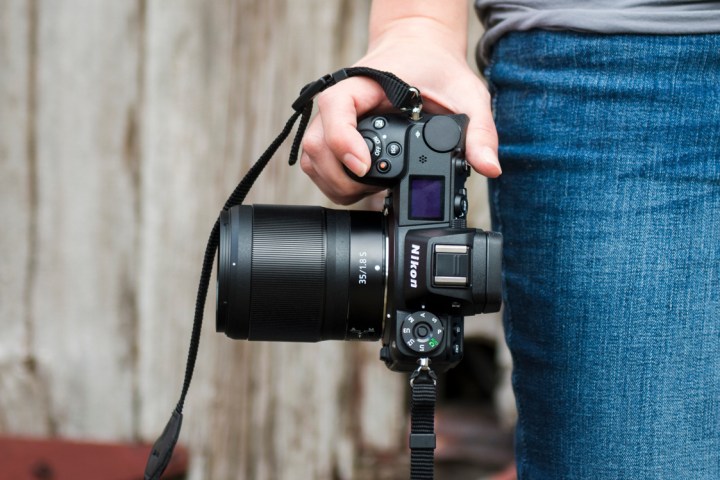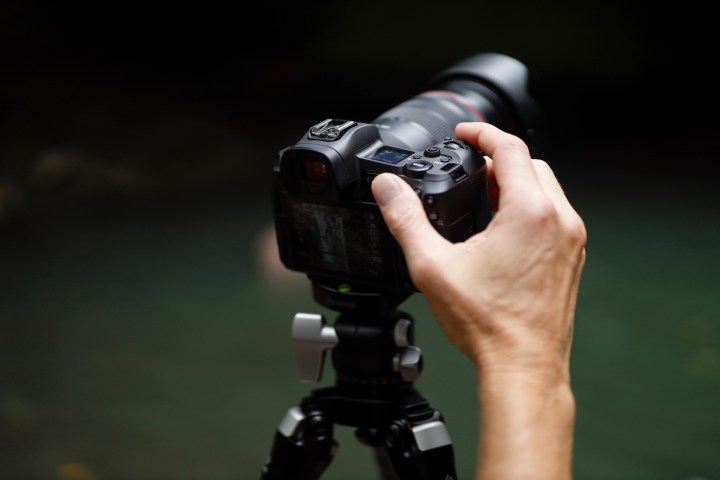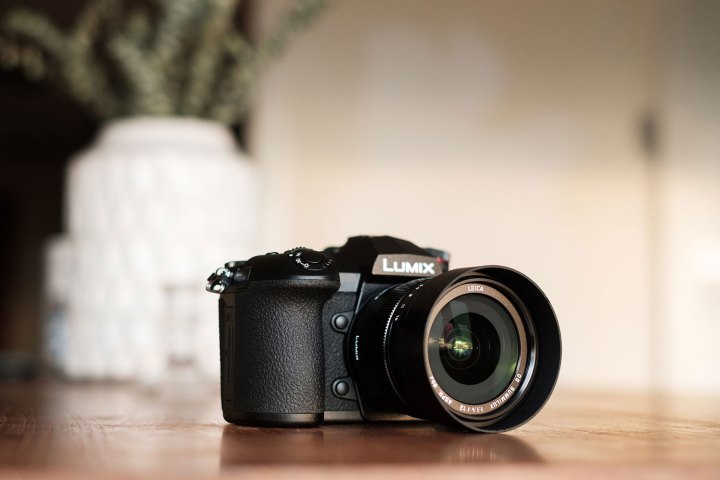
For photographers and camera geeks, 2018 was the most significant year in a very long time. We saw not one, but two new full-frame mirrorless systems introduced by longtime DSLR holdouts, Nikon and Canon. Sony and Fujifilm both wowed us with impressive third-generation versions of popular models, and back in January, Panasonic delivered a surprisingly capable Micro Four Thirds stills camera — and then later announced it would also enter the full-frame market in 2019, as part of a new alliance with Leica and Sigma.
And this is to say nothing of the bevy of excellent lenses we tested this year, from the supreme sharpness of the Sigma 105mm f/1.4 Art to the beautiful blur of the Lensbaby Burnside 35.
There were also some fumbles. 360-degree cameras continue to struggle to find their place, despite GoPro finally shipping the impressive but laborious Fusion. The Ricoh Pentax K-1 Mark II felt like a misguided attempt to teach an old dog new tricks — but Pentax fans still came out ahead thanks to the company’s new Star-series 50mm f/1.4 lens, which may just be the best 50mm prime we’ve ever used.
In short, we had ample reason to get excited this year, and are already salivating at the possibilities for 2019. Here’s our take on the best cameras of the past 12 months.
The Nikon Z Series won our award for the best products of the year. Make sure and check out all our other selections for Best Products of 2018.
Nikon Z6 and Z7

We already picked the Z-series as the overall best cameras of the year, and for good reason. Nikon didn’t just rewrap one of its full-frame DSLRs in a mirrorless body; it designed the Z6 and Z7 from the ground up to come out of the gate sprinting. It knew it needed to go all in to compete with Sony, and it did.
What impresses us most about these cameras is that they include several features that Nikon had never done before: On-chip phase-detection autofocus, 10-bit video output with N-Log, and 5-axis in-body image stabilization. And all of these systems work exceptionally well; they’d be great by any measure, but they are outstanding for first-generation products from an entirely new camera system.
Nikon Z6 review | Nikon Z7 review
Canon EOS R

Canon played it relatively safe with the EOS R, but the camera shines a bright light on a very positive future for Canon’s mirrorless efforts. It uses perhaps the most advanced autofocus system we’ve ever seen, with a dizzying number of focus points, and its ergonomics and 3.69-million-dot electronic viewfinder are second to none.
Perhaps more interesting than the camera itself are the lenses that Canon has announced for the new system, which include a 28-70mm f/2 and a 50mm f/1.2. These large optics buck the trend of mirrorless cameras as compact systems, and show that Canon is squarely focused on high-end users. The EOS R is just the first of many planned full-frame mirrorless models from Canon, so we look forward to what’s coming next.
Fujifilm X-T3

Fujifilm continues to bewilder us with each new iteration of its X-T line — in a good way. Not content to be the “budget Leica” for discerning, but frugal photographers, the brand continually redefines itself to appeal to new users without sacrificing what its fans love. The X-T3 is the most impressive APS-C camera on the market right now, thanks to technology we honestly never thought we’d see in a Fuji.
It shoots 10-bit 4K video at 400 megabits per second in the new HEVC codec with no crop, completely blowing away the video capabilities of not just the X-T2, but also the more expensive X-H1. The new autofocus system is significantly improved, with phase-detection points right to the edge of the frame. And finally, the 3.69-million-dot viewfinder is among the nicest we’ve ever put to our eyes.
Oh, and there’s a new 26-megapixel backside illuminated sensor that improves dynamic range, lest we forget.
Sony A7 III

The Sony A7 III very nearly took home the award for camera of the year. It is a powerful, refined product with years of iteration and development behind it. We were blown away by the high ISO image quality, which produces very low noise even at ISO 25,600. It also manages 10fps burst shooting with no quality reduction, an impressive feat for an entry-level model.
Being a Sony, it also turns in standout video specifications, with more customizable settings than you get anywhere else, even if its 8-bit 4K is no longer best in class. Sony set out to redefine what a “basic model” could be with the A7 III, and it certainly succeeded — even if it didn’t take long for Nikon to catch up. Nevertheless, Sony continues to impress with its engineering in ways other companies can’t, and the A7 III is its finest example to date.
Nikon P1000

The sole non-interchangeable lens camera on this list, the P1000 is a comically “cool” camera that, quite simply, doesn’t have a lot of use for most people. Its 125x zoom (24-3,000mm full-frame equivalent) is massive in both reach and physical size, leading to the largest “point-and-shoot” we’ve ever seen.
It’s impractical to say the least, but that doesn’t mean we aren’t impressed by the tech, nor that it won’t find a home with the right users. Birders, hunters, and anyone who wants to photograph the moon will fall in love with what this camera can do, even if the image quality falls well short of other cameras in the $1,000 price range.
Panasonic Lumix G9

It wasn’t a huge year for Micro Four Thirds, but Panasonic did ship two new models: the video-focused Lumix GH5S and the stills-focused Lumix G9. While the GH5S stole most of the attention, the G9 landed just outside of the spotlight. That’s a shame, because it’s arguably the best Micro Four Thirds camera available for still photographers, while also offering some great 4K video specifications.
The G9 features Panasonic’s best ergonomics and control layout yet, surpassing even that of the GH5 and GH5S, with an improved grip, top LCD screen, and enormous electronic viewfinder. It also offers 5-axis stabilization and an 80-megapixel high-resolution mode that combines multiple exposures to create incredibly detailed photographs. It is the pinnacle of Micro Four Thirds imaging, and one of the most well-rounded cameras we’ve ever been lucky enough to try.
As Panasonic enters the full-frame market on Leica’s L-mount next year, the future of Micro Four Thirds may seem to be in question. With cameras like the G9 around, however, we hope it’s here to stay.
Editors' Recommendations
- Canon EOS R5 vs. Sony A7S III vs. Panasonic S1H: Best full-frame for video?
- After years of waiting, Sony A7S III may arrive this summer
- Don’t upgrade your camera. It won’t make you a better photographer
- How the coronavirus is impacting the camera industry
- Where were all the cameras at CES? 2020 will see fewer, but better, releases




